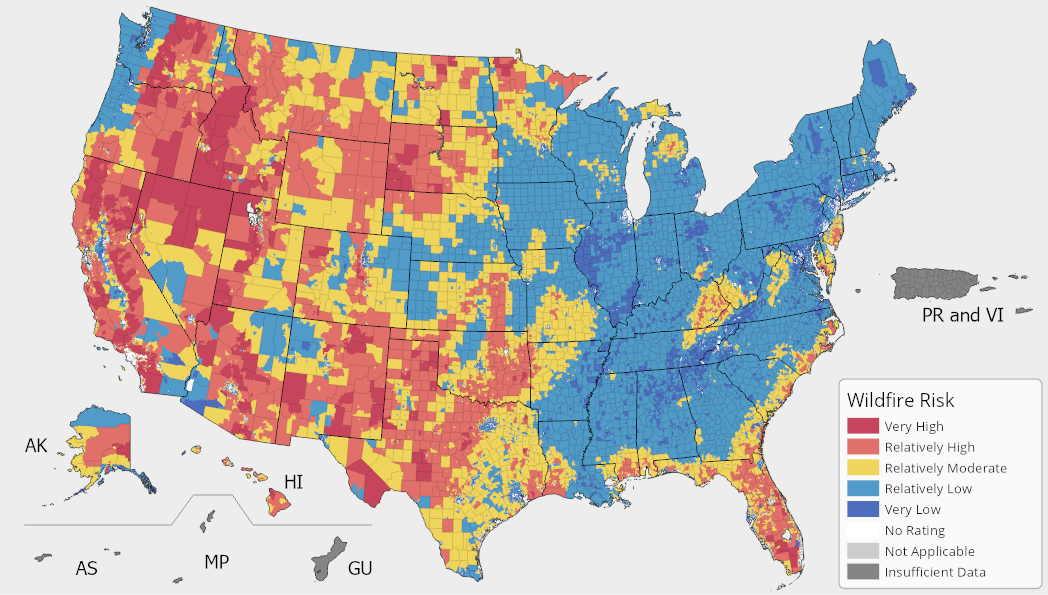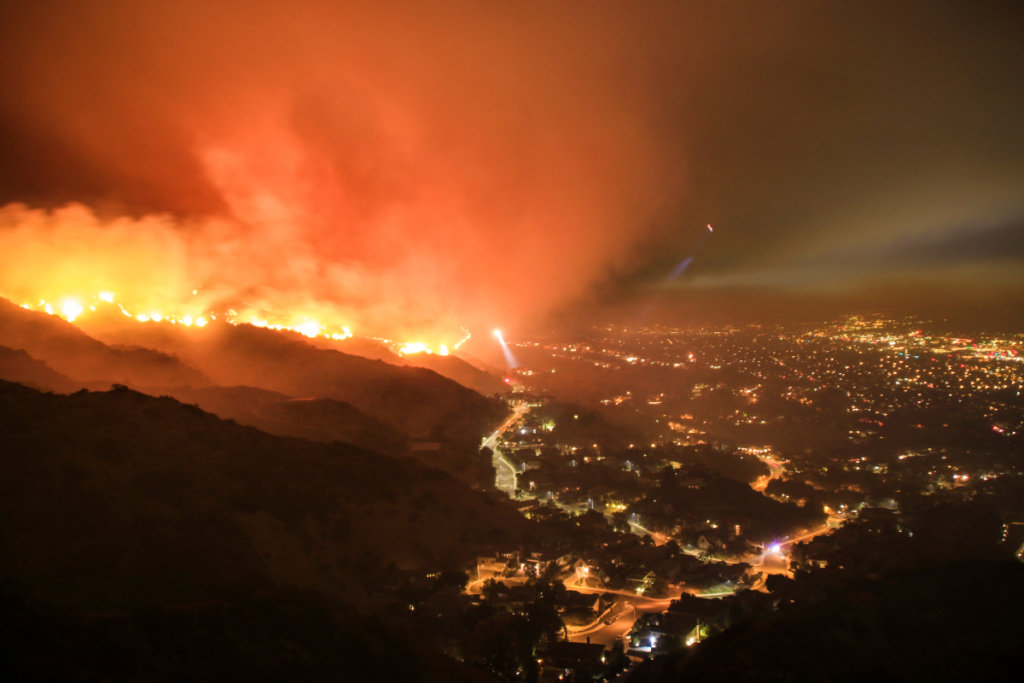With wildfires in the news these days, you may be wondering how solar power performs when the sun is obscured by wildfire smoke. As critical as this question is for California, increasingly, more regions across the nation are being affected by wildfires and wildfire smoke.

Even if you’re not in a region of high wildfire risk, you might be subject to the effects of wildfire smoke. Residents of Washington, D.C. experienced that in 2023 when smoke from Canadian wildfires reached their city.
Effects diminish as smoke dissipates
In light of this, how might your solar installation be affected by smoke from wildfires in your area — or even farther afield?
The good news is that it’s not as much as you might think, as long as the wildfire isn’t in your immediate area.
The U.S. has experienced an estimated 70,000 wildfires a year since 1983, according to the National Interagency Fire Center. A team at Colorado State University set out to understand the effect of all these wildfires on the amount of available solar resources; a study they published in January 2025 found that the effect is minimal overall.
Past studies referenced by the Colorado team have shown that local effects of wildfires on solar can be noticeable. Solar production declined by these amounts in the following situations:
- 34% over two days due to smoke at a solar plant in Spain.
- 7% during a controlled burn at a solar lab in Australia.
- 8.3% across 53 utility-scale solar plants in the western U.S. during the 2018 fire season.
- About 10–50% at southern California solar plants during the 2020 fire season.
To put this in perspective, on a very cloudy day your solar panels might generate only half of the energy they would on a sunny day. Other factors, like dust and pollen, can also affect solar production.
While these studies and others looked at the direct impact of wildfires on solar, the Colorado team also considered the effects of thick plumes of smoke that travel large distances. And they considered wildfire effects over time.
Not surprisingly, the effects of wildfire smoke are most concentrated in the areas directly affected by wildfires. Because the study was looking at the entire continental U.S. over extended time periods, the team concluded that even in extreme fire seasons, solar resources remain relatively stable across most of the U.S.
Previous research on the California wildfires in September 2020 came to a similar conclusion regarding location, showing that while solar power production declined by up to 58% in the regions with active fires, production went down just 10%–30% statewide.
So while wildfires do affect solar production, the effect is not extreme or long-lasting.
Mitigating the effects of wildfires
We should still do what we can to mitigate the effects of wildfires on solar energy production.
Some of the states with the most solar are also states prone to wildfires. If fires happen in the summer when people are using more air conditioning, any decline in solar production could mean more fossil-fuel generation would be needed to keep the power on.
That’s where energy storage can help. On a large scale, grid operators can switch to energy reserves from utility-scale batteries to make up for some of the potential energy shortfall. On a local scale, batteries can provide resilience for nonprofits, and potentially their communities, during disasters like wildfires — while also lowering a nonprofit’s electricity bills at other times.
If your solar installation is in an area that’s been hit by a wildfire, your panels may collect dust and ash from the fire. It’s a good idea to have them cleaned to ensure optimum solar production. If you live in a very dusty area, you might consider having your panels cleaned once or twice a year even if there aren’t fires.
Solar’s role in preventing wildfires
There have always been fires, but in recent years we’ve been seeing more wildfires as a result of climate change.
One way to help mitigate climate change is to transition from fossil fuels to clean energy sources like solar. By installing solar for your nonprofit, you’ll be helping in this effort.
In addition, when more solar is installed on homes and commercial facilities, including those of nonprofits, that reduces strain on the power grid during times of heavy demand — like those hot summer days when people are using more air conditioning. This reduced strain lowers the likelihood that power lines and transformers will be overloaded and spark fires.
If your nonprofit is considering solar, CollectiveSun can help! We can guide you through the process of determining whether solar makes sense for your organization, including understanding the available financing options and incentives. If you’d like to explore getting solar for your nonprofit, don’t hesitate to reach out to us.
